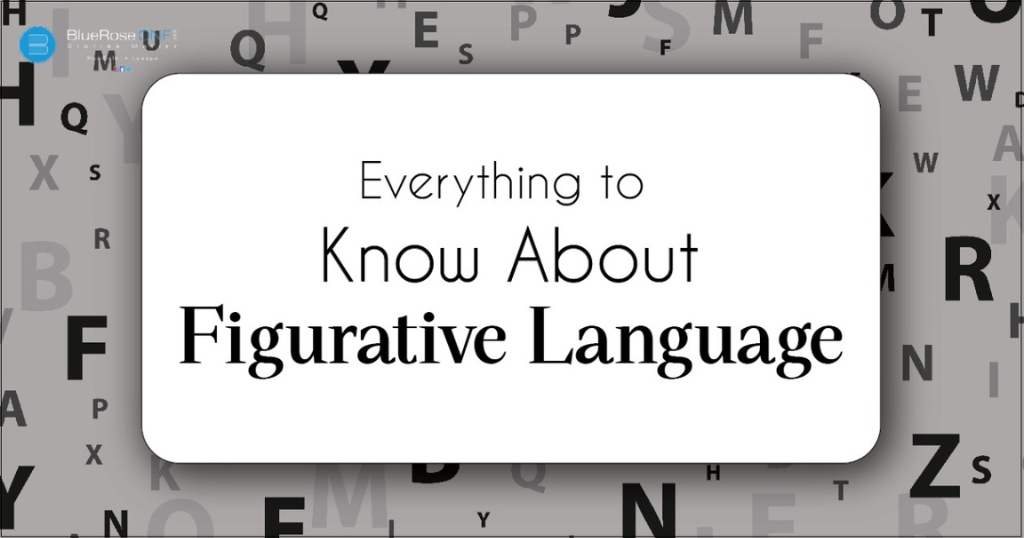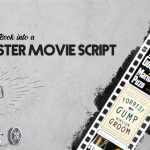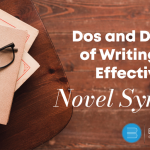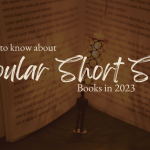Figurative language serves as a powerful tool in the realm of communication, adding depth, vividness, and nuance to our expressions. In this comprehensive exploration, we delve into the intricacies of figurative language, providing a thorough understanding along with a plethora of examples to illuminate its various forms.
Read: How Much Should My Book Cost? 7 Tips for How to Price Your Book.
Introduction to Figurative Language:
Figurative language, often referred to as a figure of speech, transforms language into an artistic tapestry, going beyond the mere literal interpretation of words. It involves the skillful application of various techniques to convey ideas, emotions, and concepts in a more imaginative and nuanced manner. By employing these linguistic devices, writers and speakers can elevate their communication, creating a richer and more resonant experience for their audience.
You may also like: The Rise of Shakti by Megha Shakti: Book Review
Understanding Figurative Language:
Figurative language operates at the intersection of language and imagination. Its essence lies in transcending the ordinary, offering a creative means to communicate thoughts, emotions, and experiences. Unlike literal language, which straightforwardly conveys facts, figurative language takes a more indirect route. It involves techniques like similes, metaphors, personification, hyperbole, and more. These tools serve as linguistic brushstrokes, painting vivid pictures and evoking emotions that go beyond the surface meaning of words.
- Similes: A Comparative Canvas
Similes are linguistic gems that enrich our language by drawing comparisons between two disparate elements using the words “like” or “as.” Consider the phrase “as brave as a lion.” Here, the simile paints a vivid picture of someone’s courage by likening it to the bravery often associated with a lion. Similes serve as a bridge between the familiar and the unfamiliar, making abstract concepts more relatable. Explore a variety of simile examples to appreciate the diverse and imaginative ways in which they enhance our communication. - Metaphors: Unveiling Deeper Meanings
Metaphors elevate language by equating one thing to another without the use of explicit comparative terms like “like” or “as.” “Time is a Thief” is a poignant metaphor that captures the essence of time slipping away irreversibly. Metaphors serve as powerful tools for conveying complex ideas, allowing readers to grasp nuanced concepts through familiar associations. Delve into a series of illustrative metaphoric examples to uncover the richness and depth they bring to our expressions. - Personification: Breathing Life into Inanimate Object
Personification involves attributing human qualities to non-human entities and infusing them with life and personality. In the phrase “the wind whispered through the trees,” the wind is personified, gaining the human ability to whisper. This technique fosters a deeper connection between the reader and the elements of nature. Explore a range of personification examples to understand how this figurative language form breathes life into the inanimate, making the world more vibrant and relatable. - Hyperbole: Exaggeration for Emphasis
Hyperbole adds flair and emphasis to language through exaggerated statements that are not meant to be taken literally. When someone says, “I’ve told you a million times,” they aren’t stating a precise count but emphasising the frequency of their repetition. Hyperbole injects drama into expressions, amplifying the impact of the intended message. Immerse yourself in a collection of hyperbole examples to appreciate how this figurative language form enhances the art of communication. - Idioms: Expressions Beyond Literal Interpretation
Idioms are cultural expressions whose meanings cannot be deduced from the individual words used. “Kick the bucket,” for instance, doesn’t involve literally kicking a bucket but refers to someone passing away. Idioms add colour and depth to language, often rooted in historical or societal contexts. Explore a myriad of idiom examples to grasp the diversity and cultural richness embedded in these figurative expressions. - Onomatopoeia: Echoes of Sound in Language
Onomatopoeia involves words that mimic the sounds they represent, creating a sensory experience within language. Words like “buzz,” “hiss,” or “clang” evoke auditory sensations, adding a layer of vividness to written and spoken communication. Immerse yourself in the world of onomatopoeia through a collection of expressive examples that showcase how this figurative language form captures the essence of sound. - Symbolism: Layers of Meaning in Objects
Symbolism imparts deeper meanings to objects, actions, or concepts, often representing something beyond their literal interpretation. For example, a red rose can symbolise love, while a winding road may represent life’s journey. Symbolism adds layers of significance to language, allowing writers to convey profound ideas through carefully chosen symbols. Explore a diverse array of symbolism examples to unravel the richness and depth encapsulated in this figurative language form.
You may also like: What is Plot Structure? Definition with Examples
How to Master the Art of Figurative Language in Your Writing
Figurative language is the secret weapon in a writer’s arsenal, capable of transforming ordinary prose into a tapestry of vivid imagery and evocative expression. Whether you’re crafting fiction, poetry, or even non-fiction, understanding and adeptly employing figurative language can elevate your writing to new heights. Here’s a guide on how to infuse your work with the power of metaphors, similes, personification, and more.
- Identify Your Message: Before delving into figurative language, identify the core message or emotion you want to convey. Whether it’s love, loss, joy, or despair, having a clear understanding of your theme lays the foundation for effective use of figurative language.
- Choose the Right Device: Figurative language encompasses various devices, each serving a unique purpose. Similes and metaphors draw comparisons; personification attributes human qualities to non-human entities; and hyperbole exaggerates for effect. Select the device that aligns with your intended impact.
- Similes and Metaphors: Similes and metaphors breathe life into descriptions. Similes use “like” or “as” to compare two seemingly unrelated things. For instance, “Her laughter was like a melody.” Metaphors, on the other hand, establish a direct equivalence, such as “Time is a thief.” Experiment with these devices to add depth and resonance to your writing.
- Personification: To add a touch of the human to the non-human, employ personification. The wind can “whisper secrets,” and the flowers can “dance in the breeze.” This anthropomorphic approach fosters a connection between the reader and the elements of your narrative.
- Hyperbole: When aiming for emphasis and exaggeration, turn to hyperbole. “I’ve told you a million times” or “It was so hot, I thought I’d melt” inject drama and intensity into your prose. However, use it judiciously to avoid diluting its impact.
- Consider the Tone: The tone of your writing influences the choice of figurative language. For a lighthearted or humorous tone, playful metaphors and witty similes might be appropriate. In more serious or contemplative pieces, metaphors with depth and resonance could be more effective.
- Avoid Clichés: While metaphors and similes are powerful, be wary of clichés. Phrases like “as blind as a bat” or “time heals all wounds” can make you feel tired and uninspired. Strive for freshness and originality to captivate your audience.
- Immerse Readers in Sensory Details: Figurative language excels at creating sensory experiences. Use it to transport readers into the heart of your narrative. Rather than stating “it was raining,” evoke a more visceral image with “raindrops tapped on the window like a soft melody.”
- Edit and Refine: Crafting effective figurative language often requires iteration. During the editing process, scrutinise each instance. Does it align with your theme? Does it enhance rather than distract? Fine-tune until every metaphor, simile, or personification serves its purpose seamlessly.
- Read Widely: Immerse yourself in literature that masterfully employs figurative language. Analyse how established authors integrate these devices into their writing. Reading widely not only broadens your exposure but also refines your intuition for when and how to incorporate figurative language.
You may also read: The 7 Best Fantasy Book Series of All Time
The Art of Crafting Figurative Language:
Mastering the art of figurative language is akin to wielding a painter’s brush on the canvas of communication. It requires a delicate balance of creativity, precision, and a profound understanding of context. Figurative language, which includes various literary devices such as similes, metaphors, personification, and more, serves as a bridge between the mundane and the sublime. When skillfully employed, language elevates language from a mere conveyance of information to a symphony of expression that resonates with readers.
Figurative Language in Literature:
Literary luminaries across the ages have harnessed the power of figurative language to weave enchanting tapestries of words. In the realm of poetry, Shakespeare’s sonnets stand as timeless examples of metaphorical brilliance. Each line is pregnant with layers of meaning, inviting readers to explore the nuances of emotion and experience. Emily Dickinson, with her evocative similes and metaphors, painted vivid images that linger in the mind. Figurative language, in literature, is not merely a tool; it’s an art form that transforms words into an immersive experience.
Figurative Language in Everyday Communication:
Beyond the hallowed halls of literature, figurative language infiltrates the fabric of our everyday conversations. It’s in the way we describe the weather, compare experiences, or convey emotions. Casual metaphors pepper our language, making it more vibrant and relatable. When we say, “Time flies,” we’re not referring to temporal wings but encapsulating the swift passage of moments. Expressive similes like “as busy as a bee” vividly convey a person’s industriousness. Figurative language in daily discourse enhances communication, making it not just informative but engaging and resonant.
Read: How to Overcome Writer’s Block: 10 Proven Ways to Unlock Your Creativity.
In essence, the art of crafting figurative language is a dynamic interplay of linguistic dexterity and imaginative finesse. It’s about choosing the right brushstroke of metaphor, the perfect hue of simile, and the subtle shading of personification to create a masterpiece of expression that captivates and lingers in the minds of the audience. Whether in the lofty realms of literature or the casual cadence of everyday speech, figurative language is a potent tool that elevates communication to an artful dance of words.
Publish your book with BlueRoseONE and become a bestselling author. Don’t let your dream of becoming an author fade away, grab the opportunity now and publish your book – be it fiction, non fiction, poetry or more.
















